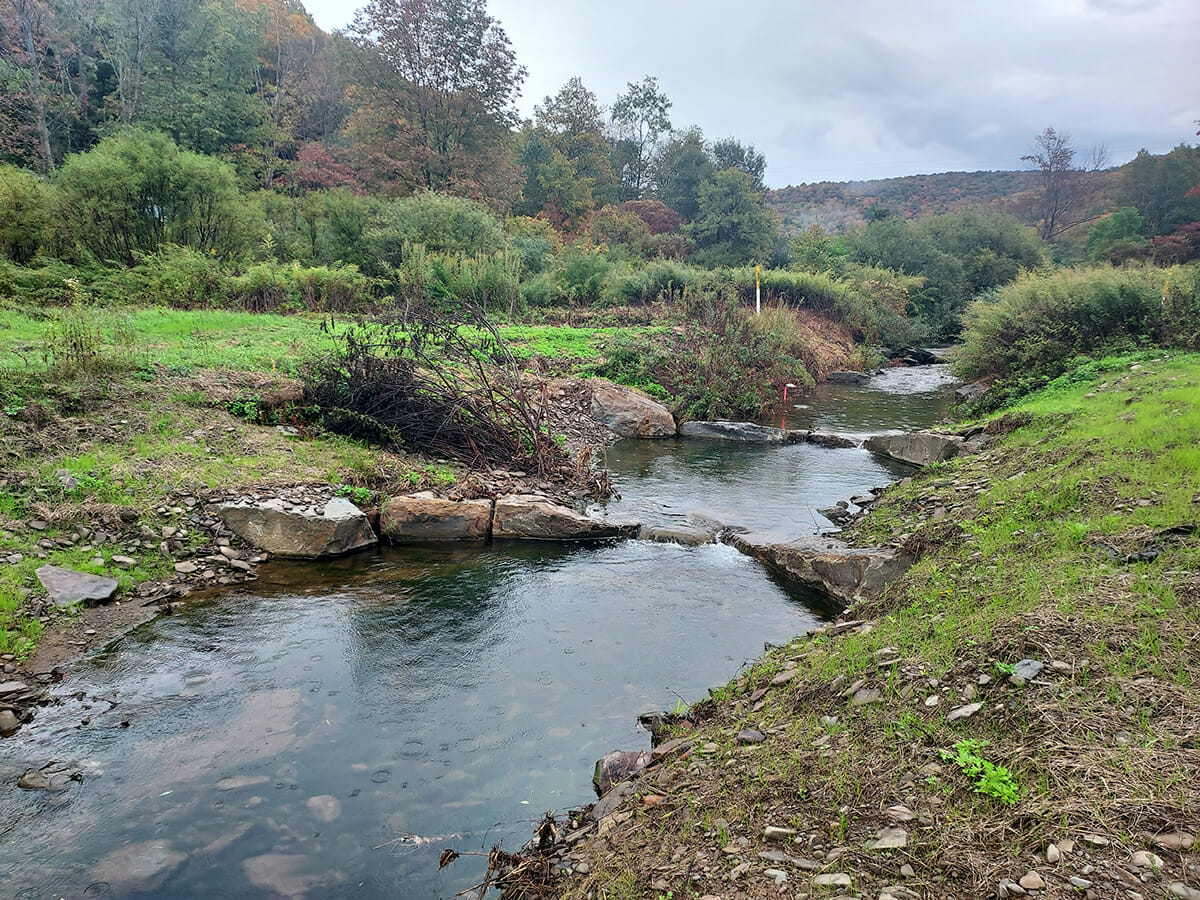Bipartisan Infrastructure Law helps TU and partners boost efforts in the Delaware River watershed
Juggling three balls can be tricky.
Try 19.
That’s how many projects Jo-Anne Humphreys has had on her plate this year as a stream restoration specialist for Trout Unlimited’s Northeast Coldwater Habitat Program.
“It’s been my busiest professional year ever,” said Humphreys, who has more than 20 years of experience in the conservation field. With a laugh she added, “It’s been great, but I’ll be ready to take a breath when the field season is over.”
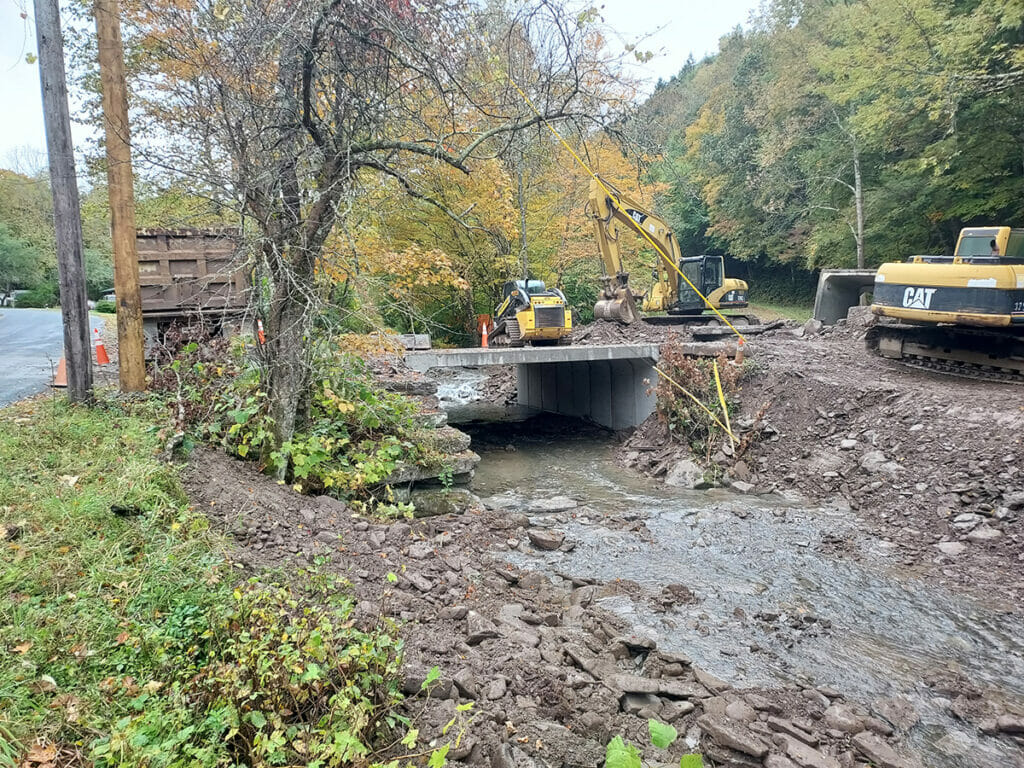
Humphreys may get a brief respite from digging in the dirt when the snow starts falling in New York, where most of her projects are. But 2023 will be another humdinger, as TU and partners continue to expand their restoration efforts in the Delaware River Basin, at the heart of which is one of the best trout fisheries in the East.
Wild trout fisheries get a lift from Bipartisan Infrastructure Law
Over the past five years, TU and its key ally in the region, the Friends of the Upper Delaware River, have worked collaboratively with the U.S. Fish and Wildlife Service, New York Department of Environmental Conservation, the Delaware County Soil and Water Conservation District, and other partners to invest nearly $5 million in an array of conservation projects in the region.
That number will grow significantly as the result of several recently announced new projects, many of them made possible by a $26.1 million funding infusion from the federal Bipartisan Infrastructure Law signed last year.
The Delaware River courses through four states—New York, New Jersey, Pennsylvania, and Delaware—and its 13,539-square-mile watershed supports water supplies that serve more than 13 million people, including New York City’s residents.
Bug factory boosts economy along Delaware River
The upper stretches of the river’s east and west branches benefit from cold water releases from the Pepacton and Cannonsville dams, with the chilly flows supporting excellent populations of wild brown and rainbow trout. Anglers from near and far flock to the river to chase its bug-sipping trophy rainbows and browns, and studies have shown that tourism is the leading revenue source for the Upper Delaware Region.
As with most rivers in the East, the Delaware faces no shortage of challenges, from industrial pollution to water supply disputes.
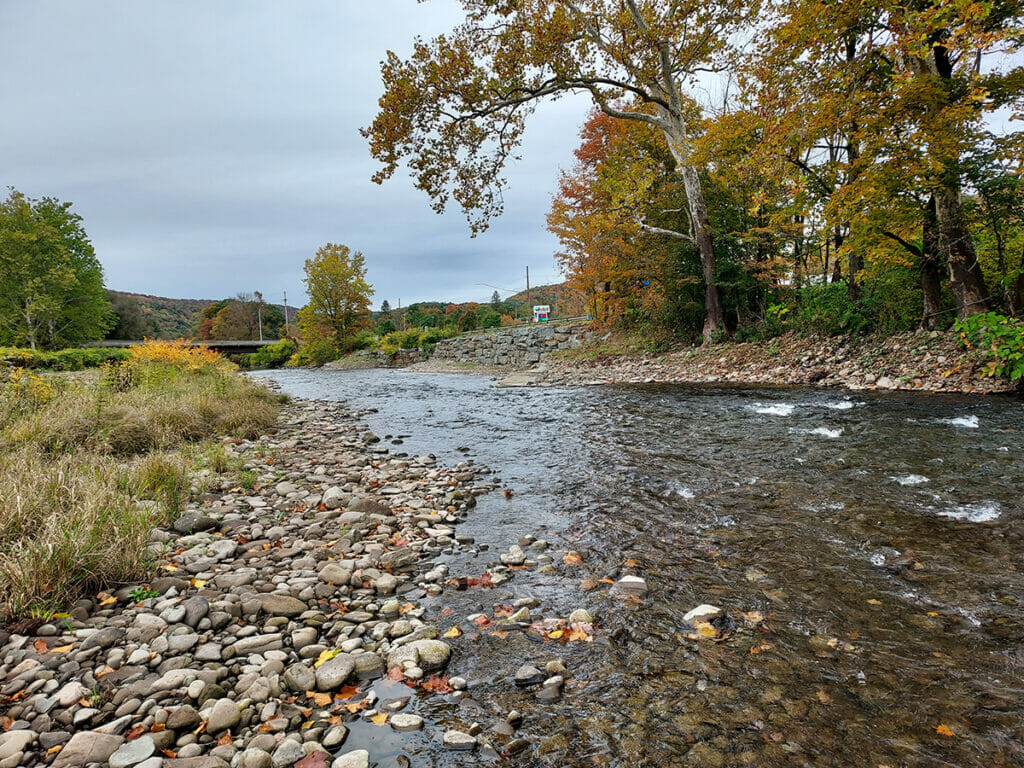
The Coalition for the Delaware River Watershed is a group of roughly 100 entities that, with support from the William Penn Foundation, have been coming together to increase capacity for protection and advocacy work in the basin. TU sits on the coalition’s steering committee.
Restoration work in the Delaware Basin gained a massive boost after the 2016 passage of the Delaware River Basin Conservation Act (DRBCA), which set the framework for achieving goals of conserving and restoring fish and wildlife habitat, improving and sustaining water quality, upgrading water management and reducing flooding damage, and enhancing recreational opportunities and public access.
Fish & Wildlife’s Delaware program succeeds
The DRBCA created a Delaware Watershed Conservation Fund, which has since awarded $40.4 million for 159 projects. Grantees have contributed an additional $59.7 million in match for a total investment of $100.1 million. The U.S. Fish and Wildlife Service oversees the funding program, and works with the National Fish and Wildlife Federation to manage the grant program.
The House of Representatives has acted to reauthorize the DRBCA this year; now, it’s time for the U.S. Senate to follow suit and allow this successful program to continue.
Tell Congress to take action to support funding for the Delaware River Watershed
Trout Unlimited invests federal dollars for trout and communities
TU has had a hand in $5 million worth of projects supported by the federal funding, often in conjunction with FUDR.
This work includes addressing culverts that block fish passage and create flooding risks, restoring eroding streambanks, and improving and building public boat ramps and water access points. TU and partners are also installing instream structures that not only benefit fish but, in some cases, protect infrastructure such as water and sewer lines that are buried in streambeds.
In addition to projects headed by TU staffers like Humphreys and her supervisor, Connecticut and New York Restoration Manager Tracy Brown, chapters have also been able to tap into the fund for projects.
Trout Unlimited and Friends of the Upper Delaware at work
FUDR has been a critical partner with TU in the region for about a decade.
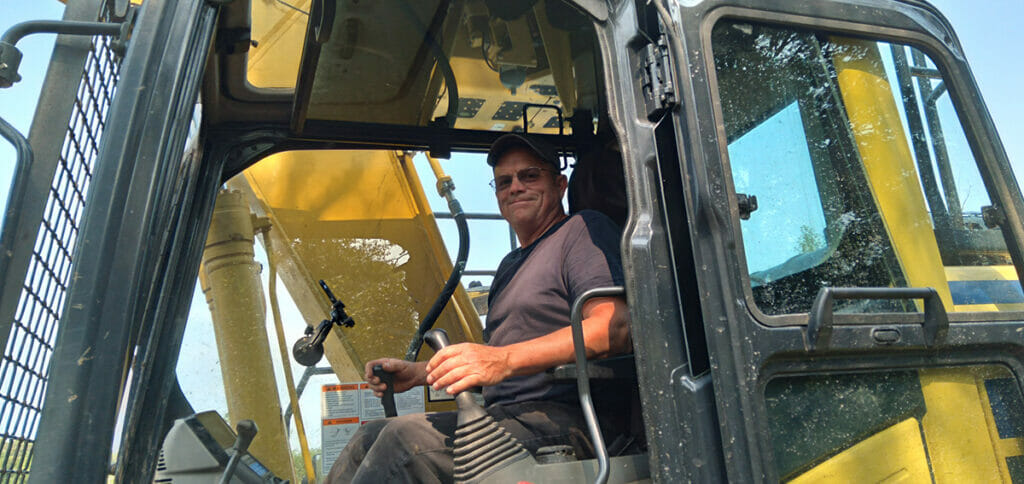
“One of the kickoff projects that started this partnership was the stream corridor management plan that we did for the tailwaters below the Pepacton and Cannonsville dams in Delaware County,” said Molly Oliver, policy director for FUDR. “Going through that process, making all of the partnerships and building relationships with the community and the municipalities and businesses in the area really launched the success that we’ve had in this part of the watershed.”
FUDR not only helps with grants, but also spearheads a lot of the restoration outreach efforts, such as connecting with landowners, including municipalities, to talk through project processes.
“We work on a lot more of like the soft side of things,” Oliver said. “Jo-Anne is often doing our designs and Tracy has the answer to every technical question I or anyone else could ever ask her. At a high level, it’s kind of a perfect partnership where we have these complementary skills to be more effective.”
Partnerships key to health of Delaware River fishery
Humphreys pointed out several other critical partnerships.
“Take the Fish & Wildlife Service,” she explained. “They provide free design support and construction oversight, as well as permitting support.
“When we’re working with the U.S. Army Corps of Engineers, they can help get a project permitted in a number of days instead of months.”
The New York Department of Environmental Conservation and the Delaware County Soil and Water District are other key collaborators.
“The DEC helps us to identify priorities in the watershed and often provides funding, and they also provide permitting support and quickly approve extensions when needed,” Humphreys said. “The Delaware County SWCD provides critical technical oversight and formally approves our plans, which saves TU the cost of hiring an outside engineer.”
Contractors hired to do the work on the ground are also crucial.
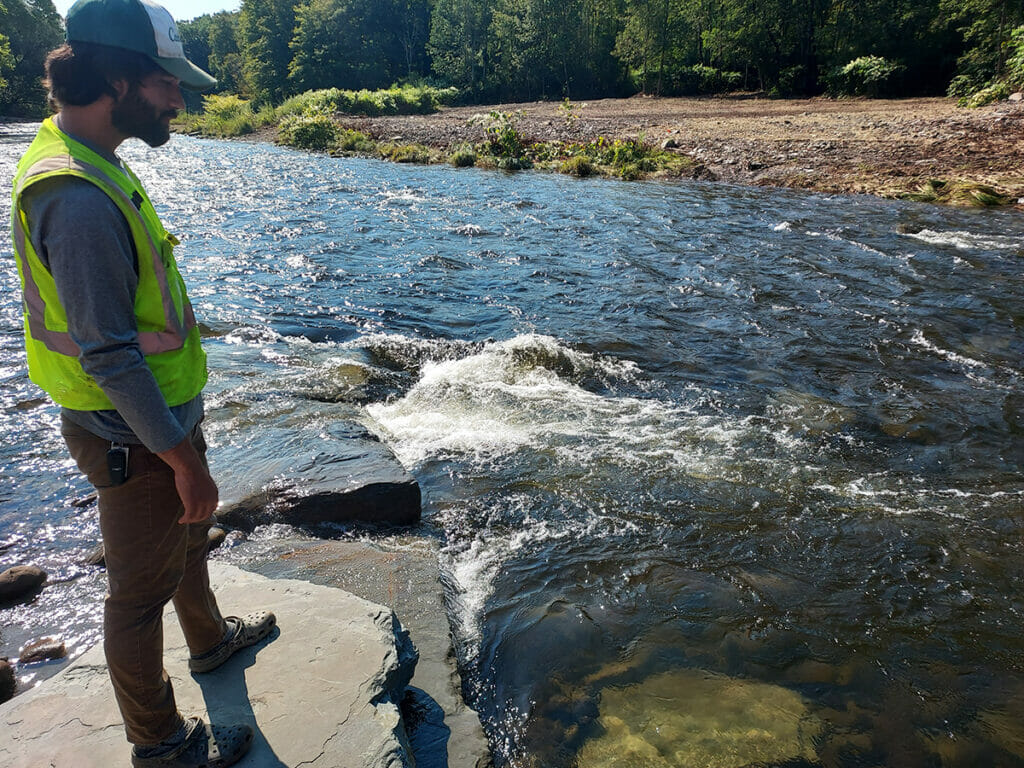
“They do an outstanding job of bringing our designs to life,” Humphreys said. “It only strengthens and enhances our projects to have all these experts involved.”
That includes not only direct funding and project partners, but other supporters.
“You can’t do these projects unless you’ve got local municipalities, local officials, county government and other groups involved,” said Jeff Skelding, executive director of FUDR. “They all must be there with you.”
Restoring key tributaries of the Delaware River
New York’s Little Beaverkill has been the site of several restoration projects over the past few years.
In many cases, the stream’s banks had been severely eroded. Every time the water levels rise in such areas, large chunks of soil slough off the banks into the streams.
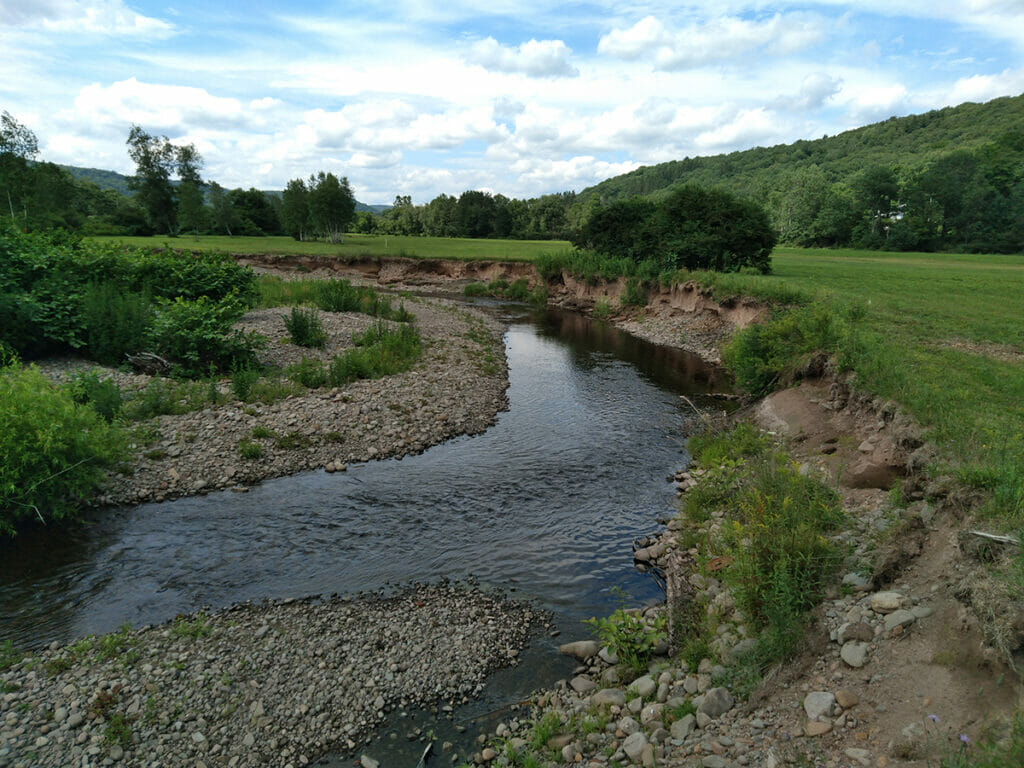
Restoration projects at several sites reshaped the banks by moderating the bank slopes. That allows high water to access the river’s floodplain, which can then deposit silt on the floodplain instead of washing it downstream.
The addition of instream structures, such as large rock and tree root balls, further stabilizes banks while also creating excellent trout habitat.
Stream restoration translates to local community safety
Often, the work protects roads.
At a site on Laurel Creek in the town of Deposit, TU tackled a collapsing rock wall along a local road, a project that required 12 log and rock grade control structures to stabilize the bed and help reconnect the stream to a vegetated floodplain.
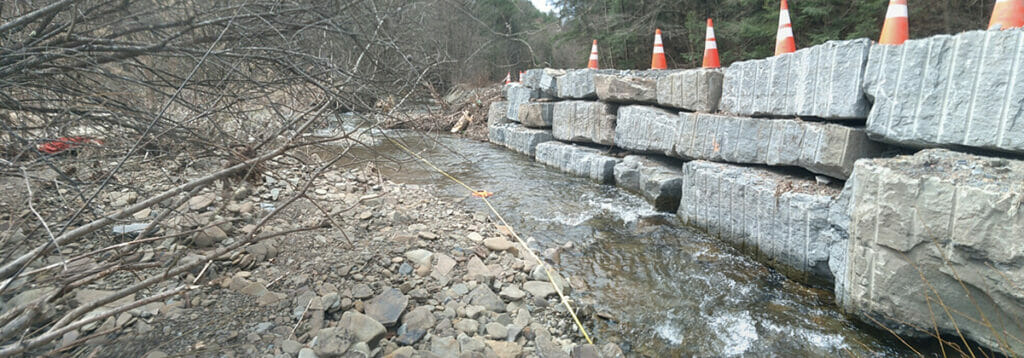
On the Willowemoc, the town of Rockland was seeking to enhance habitat as well as protect a collapsing road. TU worked closely with the FWS’ Carl Schwartz and the town to install vanes along the rock wall to improve pool habitat.
“They were already planning to install a rip-rap wall as a repair,” Humphreys said. “Carl and Tracy suggested that we could put in some rock vanes to improve habitat and the town supervisor agreed.”
The result was a finished product that protected important road infrastructure while also improving habitat for trout and other aquatic critters.
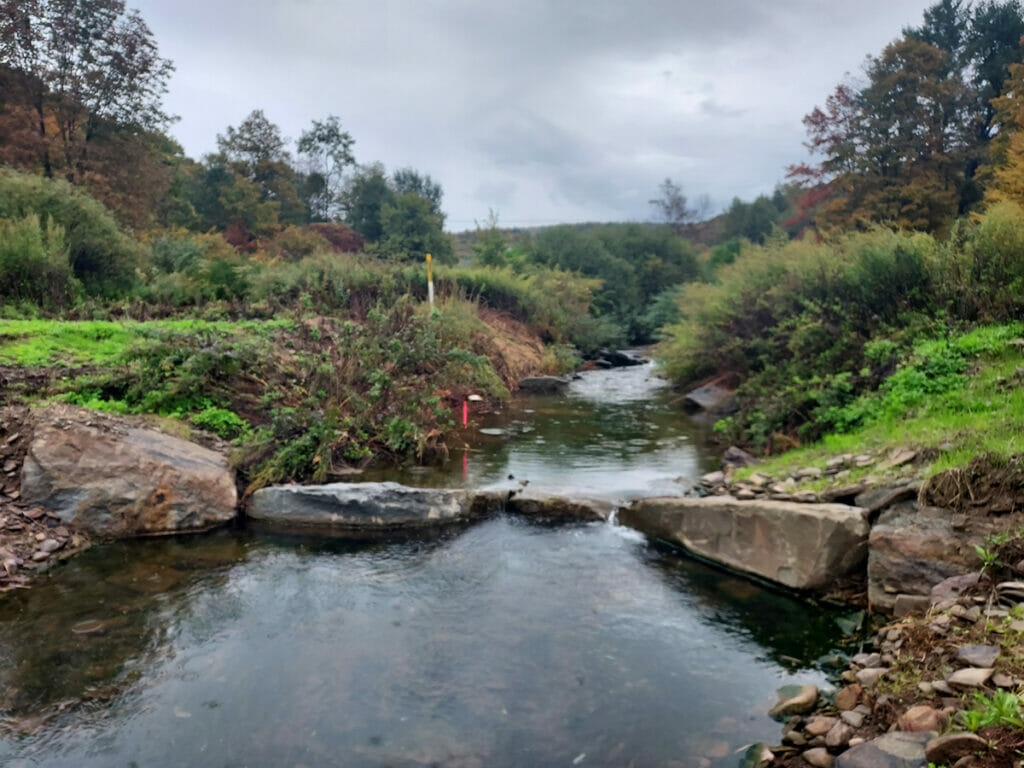
Pipelines and trout streams in the Delaware system
Addressing water and sewer lines that are buried in streambeds has been a unique challenge.
“When these pipes were installed, they were buried several feet below the streambed,” Humphreys said. “But over time, erosion and channel incision exposed the pipes.”
If, during a high-flow event, a large rock hits an exposed pipe, it could result in a sewage spill or contamination of a water system. Installing grade control structures below the exposed pipes can raise the water level and encourage deposition over the exposed infrastructure—called “backwatering”— enough to reduce the risk of damage.
Some projects have been specifically aimed at increasing recreation and public access. That includes the recent construction of several boat ramps and access points.
FUDR leads effort to secure state funding for the Delaware River
While funding from the Bipartisan Infrastructure Law is boosting efforts, the Delaware basin will also benefit from a newly approved funding source from New York State, which now includes a line item for Delaware basin restoration in its annual budget.
“New York State has been historically sparse with conservation investments in the Upper Delaware below the New York City water supply reservoirs, despite this being one of the nation’s finest wild trout tailwaters,” Skelding said. “Over the past three years, FUDR organized coalitions and implemented a regional grassroots campaign to persuade decision makers at the state capital to include an annual allocation of $300,000 in the New York State Environmental Protection Fund.”
“This historic achievement will also enable TU and FUDR to provide much-needed match funding for federal grants from the DRBRP to continue to put stream restoration projects on the ground,” Skelding said. “Those projects will protect the fishery, mitigate flooding, repair aging infrastructure, and enhance river related recreational opportunities.”
On a recent morning while reviewing progress at an on-going project, Humphreys reflected on her year ahead.
“More funding means more projects, so we’re going to just keep getting busier,” she said. “That’s a good thing because the busier we are, the better the health of the watershed.”
Trout Unlimited Mid-Atlantic Organizer Emily Baldauff contributed to this story.



